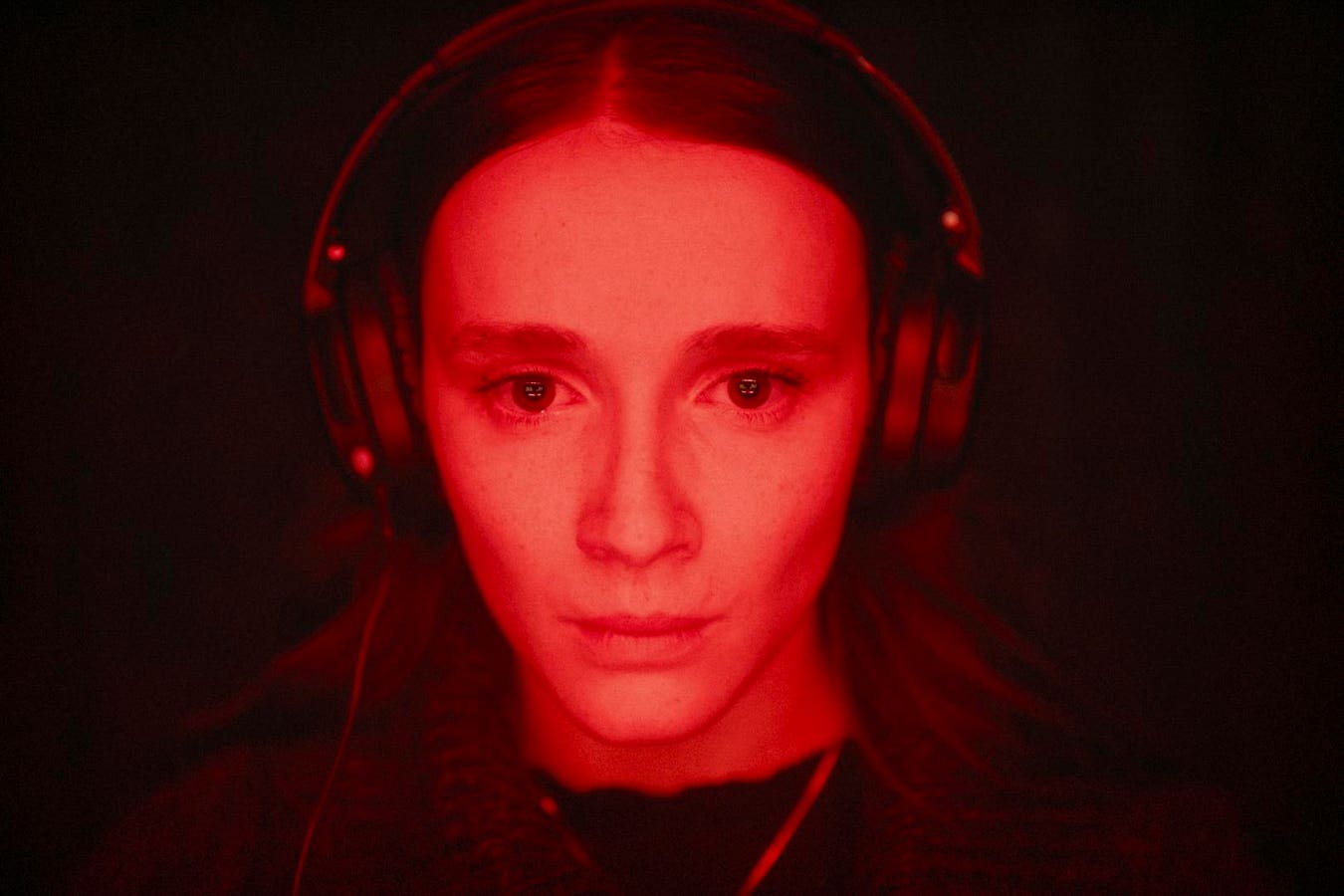Kelly-Anne (Juliette Gariepy) spends her days at a high-profile murder trial. Ludovic Chevalier is charged with brutally killing three teenagers while webcasting their murders from a “red room” hidden in the grimmiest corners of the dark web. Kelly-Anne arrives downtown in the wee hours of the morning and sleeps across the street from the courthouse to secure her place in line as a spectator. Is she a serial killer groupie, quietly supporting someone she thinks is an innocent man? Or is there something more at work here?
Red Rooms, a dread-soaked thriller from Montreal writer-director Pascal Plante, developed an early buzz after its screenings at The Overlook Film Festival in New Orleans back in April (where I saw it for the first time). The film is now scheduled to open on approximately forty screens nationwide on Friday, September 6th. If crime films that border on the horror genre (like David Fincher’s Zodiac) are your jam, don’t you dare miss this film.
The strength of the film is its faith in the intelligence of its audience. That confidence begins with a tight screenplay devoid of the exposition and explanations that so often bog down crime thrillers. Plante assumes you are paying attention and avoids the impulse to spoon-feed character motivations and backstorys to viewers. We are flies on the wall in the courtroom and in Kelly-Anne’s apartment as the mystery unfolds. Be patient. Watch and listen as the pieces are slowly revealed and snap into place. The narrative ultimately pays off like gangbusters without the feeling that the characters are puppets on strings being dragged to some pre-determined destination.
A famous jazz musician (I believe it was Miles Davis) once said, “It’s not the notes you play. It’s the notes you don’t play that matter.” Writer-director Pascal Plante heeds this advice and knows the tropes and story-telling pitfalls to avoid. The film’s strengths lie in what it doesn’t do. The absence of the narrative crutches that so many filmmakers lean on makes Red Rooms feel wholly original. (My only nitpick would be that our punk rock, online poker-playing, cover model protagonist feels a lot like Lisbeth Salander from the Girl with the Dragon Tattoo films, but that’s in no way a major flaw.)
Talented filmmakers make countless choices while shooting a film. From the production design to the score (or the lack of one) to the cinematography, the success of the finished product relies on the blend created by all of these aesthetic choices. It’s like watching a tightrope walker high above a city street, hoping he doesn’t make a single misstep that brings the whole enterprise crashing to the ground. Plante nimbly crosses that tightrope without breaking a sweat. Put him on my short list of young directors with big futures ahead of them.
Juliette Gariepy is a wonder as Kelly-Anne. With very spare amounts of dialogue at her disposal, Gariepy gives a master class in wordless performance, expertly utilizing her eyes and facial expressions to give the audience a look inside Kelly-Anne’s mind. The actress embraces the same “less is more” aesthetic as the screenplay, creating a unity between performance and story. The nuances of her work are even more impressive upon a second viewing.
I intentionally distilled the plot of this film to a single general paragraph because I don’t want to spoil any of its clever developments. I’ve similarly avoided discussing other characters and the solid performances of the actors bringing them to life because I don’t want to hint at the character dynamics in the film’s second and third acts. Avoid trailers. Avoid talking to people who’ve seen Red Rooms. Be the blankest slate you can be, and then drink in the smartest thriller of 2024.
Read the full article here





